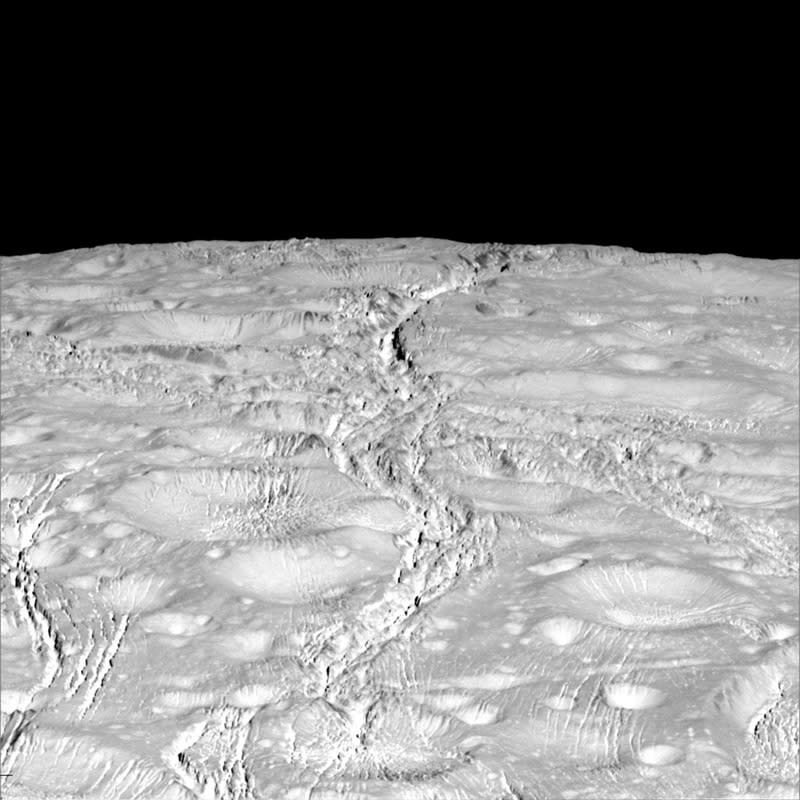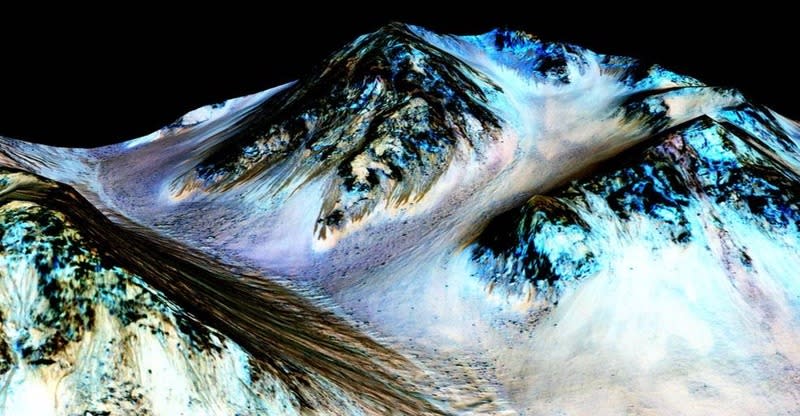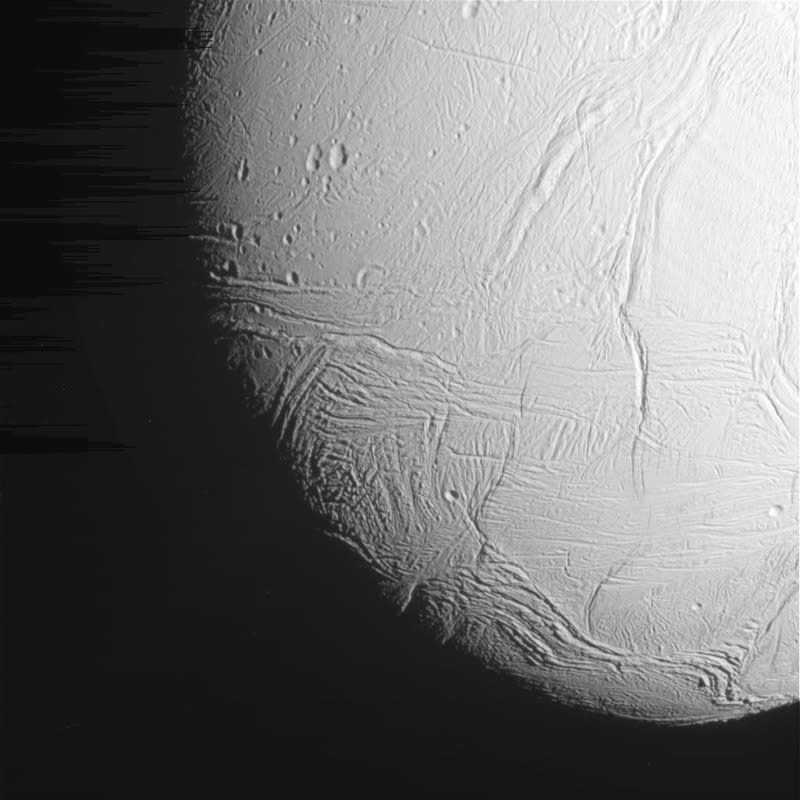Space: Water, Water Everywhere — but Does That Mean There’s Life?

Enceladus (Photo: Nasa.gov)
If it sounded like science fiction, that’s because it was.
Back in 1982, writer Arthur C. Clarke — famous for predicting the communications satellite, among other technologies — published a sequel to 2001: A Space Odyssey featuring a Chinese spacecraft that landed on one of Jupiter’s moons and encountered alien life from an ocean deep beneath the moon’s icy shell.
Then last week came news that the Cassini spacecraft had grazed within 30 miles of the surface of Saturn’s moon Enceladus, flying through a giant plume of ice and other material that had previously resided deep inside the moon. Among other things, Cassini was searching for molecular evidence that Enceladus’s ocean has hydrothermal vents and a rocky seafloor.
The premise of Clarke’s story has become increasingly realistic over the last 30 years, as it’s become clear that the most likely places in the solar system to find life aren’t on Mars or any other planet, but beneath the surfaces of icy moons out in the far reaches of the solar system.
Just add water
Searching for places in our solar system that might support (or have once supported) life is one of the major science goals at NASA these days. Evidence of free-flowing water on the surface of Mars suggests that planet could have supported life, though today it’s a pretty dry, desolate place.

Evidence of water flows on Mars? (Photo: Nasa.gov)
The search for water is crucial to that larger goal because life as we understand it requires “a liquid in which chemical reactions can happen,” according to Planetary Society editor Emily Lakdawalla. “And water is everywhere, it’s just so ubiquitous.”
In addition to liquid water, though, life also needs a source of energy, such as hydrothermal vents at the bottom of an ocean. And it needs raw materials — organic molecules that can be used as the building blocks of life. What’s exciting about Saturn’s moon Enceladus, as well as Jupiter’s moon Europa, isn’t just that they have sizable oceans beneath their icy shells. They also very likely have energetic, rocky seafloors. That’s the magic combination of ingredients that could support life.
Even better, both moons do scientists a big favor by periodically spitting portions of their liquid oceans out into space.

Enceladus (Photo: Nasa.gov)
Examining the ejecta
By flying past Enceladus at a low altitude, Cassini was able to sample some of the contents of those oceans. It also had a chance to capture more massive particles before they fall back to the surface, according to Cassini project scientist Linda Spilker.
“There’s reason to think that Cassini might be able to detect fragments of complex organic molecules with its cosmic dust analyzer,” Spilker says. “So even though Cassini can’t detect life itself, it can provide us a window into the ocean to help us understand if it has the conditions that might make it habitable for simple forms of life.”
This was Cassini’s last chance to sample the plume, so it will be up to future missions to follow up on its discoveries. According to Lakdawalla, a mission to fly a spacecraft equipped with instruments capable of really sampling Enceladus’s plume would be “very easy to do if we threw money at it,” but it’s hard to fit funding for more expensive outer solar system missions into NASA’s lower-cost Discovery Program missions.
The lost shaker of salt?
Then there’s Europa, the setting for the alien encounter in Clarke’s novel. As with Enceladus, we’ve spotted plumes of water from Europa in the past. And last week, Patrick Fischer of Caltech suggested that those plumes may leave traces of its deep, large, liquid-water ocean on the surface, accessible to our scientific instruments.
Fischer’s results suggest that the weirdest, most jumbled part of Europa’s surface isn’t composed of quite the same material as the rest. He suspects that water from beneath Europa is erupting in these regions, coating everything with salts and other materials that are left behind after the water has evaporated away into space. And that coating “should have a composition more related to the subsurface ice or ocean,” Fischer says.

What a water plume on Europa might look like. (Artist’s rendering: NASA/ESA/K. Retherford/SWRI)
Fischer’s faculty adviser at Caltech, Mike Brown, joked on his blog that such a salt-coated region should be dubbed “Margaritaville” and suggested it as a great spot to land a probe. There’s just one problem: That chaotic terrain on Europa might be one of the worst places to try to land, because of its rough-and-tumble nature. “You can’t put a lander down on a surface you haven’t mapped, and we don’t have data at the scale a lander would require,” Lakdawalla says.
Fortunately, there are two missions on the books that will give us a better view of Europa — eventually. NASA’s Europa Multiple-Flyby Mission was approved in June and is planned for launch in the 2020s, and the European Space Agency’s Jupiter Icy Moon Explorer is planned for launch in 2022.
Neither of these will land close enough to directly taste the salts of Margaritaville, though. So even if Clarke’s tale of Europan plant life in 2010 is eventually proven correct, it’ll be decades later than even he imagined.
Jason Snell is a longtime technology journalist and podcaster who blogs at Six Colors and co-hosts the space podcast Liftoff.
